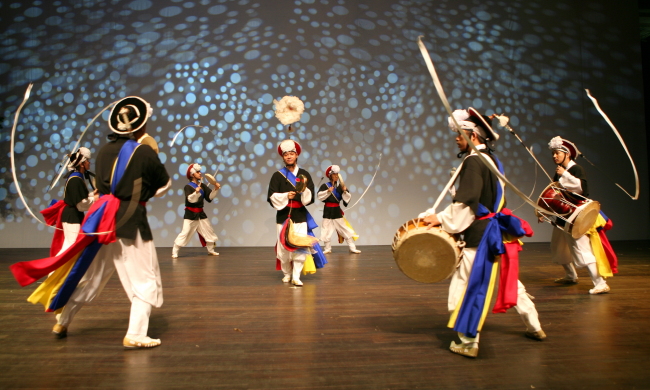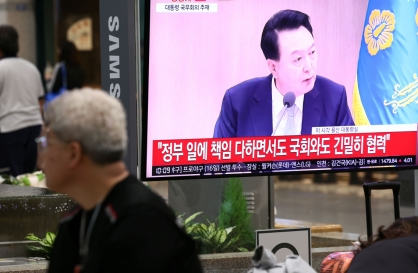The Lunar New Year holiday is a great opportunity for locals and expats to experience traditional Korean activities. For those who are at a loss for how to spend these five days off, we suggest you take advantage of the various holiday promotions being offered at cultural sites around Korea.

Palaces, tombs and games
On Feb. 19, Lunar New Year’s Day, the Cultural Heritage Administration will offer free admission to royal palaces and tombs. Jongmyo Shrine, for example, which can usually only be visited with a reservation, will be open to the public from Feb. 18-22.
A number of family-friendly, fun-filled activities are also available. At Hamhwa-dang and Jipgyeong-dang in Gyeongbokgung Palace ((02) 3700-3919), visitors will be able to light traditional furnaces of the royal palace and experience “ondol,” the Korean floor heating system. They will also be able to step inside ancient rooms and perform “sebae,” the Korean New Year tradition of kneeling and bowing to elders.
To experience Korean folk games of yore, visit Hamneyong-jeon in Seoul’s Deoksugung Palace ((02) 751-0740); Yeongreung ((031) 885-3123), the tomb of King Sejong in Yeoju; Hyeonchungsa ((041) 539-4604), the shrine for General Lee Sun-shin in Asan; or the Chilbaek Cemetery of Righteous Fighters ((041) 753-8702) in Geumsan.
These sites will be hosting a diverse array of outdoor activities including the traditional board game “yutnori” and “tuho,” which involves throwing arrows into a narrow-necked wooden jar. Visitors may also enjoy “jegichagi,” a game in which players kick a shuttlecock-like object to keep it in the air.
Full Seollal feast
Traditionally, Korean families and relatives gather together on Seollal, or Lunar New Year’s Day, for a hearty feast commemorating their ancestors. For those who wish to experience this age-old custom, Namsangol Hanok Village ((02) 2261-0517) is presenting a Seollal feast event from Feb. 19-21. Visitors can taste tteokguk (traditional rice-cake soup), make rice cakes the old-fashioned way with a rice-beating mallet and learn details about dishes placed on the table during “charye” ― a ceremony in which food is offered to ancestors in hopes of good fortune for the New Year.
A very woolly New Year
From Feb. 18-22, the National Folk Museum of Korea ((02) 3704-3114) is providing a series of whimsical events in celebration of 2015, the Year of the Sheep.
A collection of everyday household items bearing sheep designs will be on display. Visitors will also be able to make their very own stuffed sheep and sheep-shaped coin boxes as well as sheep-patterned “hanji,” or traditional Korean paper. Those born in the Year of the Sheep will receive special presents. A temporary sheep-themed lounge area will be constructed near a special exhibition titled “Sheep Bring Happiness.”
There will also be Korean fortune-telling, “tojeong bigyeol” and hanbok-fitting.
Sweets such as gangjeong, or fried rice cakes, will be handed out. For souvenirs, visitors can make customized New Year’s cards, pouches and kites at the crafts section.
Giddy with ‘gugak’
For more games and fun, visit the outdoor stage at the National Gugak Center ((02) 580-3300) on Feb. 19 and 20.
There, you will be able to participate in activities such as “neolttwigi,” which involves jumping on a seesaw-like board, and sledding on straw shoes.
Afterward, head over to the theater for a spirited performance of “gugak,” traditional Korean music, titled “Euigiyangyang (Triumphant).”
The opening of this multigenre show will depict a dragon ascending to the skies in a prayer for a peaceful new year, while the main plot will feature two children on a journey in search of holiday spirit. Filled with lively string instruments and folk dances, the musical will provide merry entertainment for all ages. Special stages with folk songs from around Asia are also being arranged for expat families.
Handwrite your hopes
For a more introspective experience, stop by Sejong Center ((02) 399-1173), where you will be able to write your New Years’ resolutions and wishes in calligraphy on Feb. 19 and 20. The center will provide a variety of traditional writing instruments including brushes and wooden twigs.
Regularly scheduled arts and craft sessions are available from Tuesdays to Sundays until March 1. Visitors will be able to make “bokjoris,” or traditional good-luck pouches, out of paper, inside which they can place famous quotations by King Sejong.
A day of Hangeul
The National Hangeul Museum ((02) 2124-6200) will be open on regular hours during Feb. 18-22. On display are permanent exhibition “Footprints of Hangeul (the Korean alphabet system)” and a special exhibition on King Sejong’s invention of Hangeul.
Japanese-speaking tourists might like to visit the museum on Feb. 18, as a guided tour will be given in Japanese. A group of 40 or more Japanese students from the Korea University Korean Language and Culture Center will be participating as well.
A concert featuring traditional Korean music and dance with a modern twist will be held on Feb. 19.
Art, culture, and more
Admission to the National Museum of Modern and Contemporary Art in Seoul ((02)-3701-9500) and Gwacheon ((02)-2188-6000) will be free from Feb. 18-22. Various folk games will be hosted in the gardens. The NMMC Deoksugung ((02)-2022-0600) will also be open during the holiday period.
Additionally, all 13 state-run museums around Korea, including the National Museum of Korea ((02) 2077-9000) in Seoul, will be offering a series of cultural programs during Feb. 18-22.
By Rumy Doo (bigbird@heraldcorp.com)
-
Articles by Korea Herald








![[From the Scene] Monks, Buddhists hail return of remains of Buddhas](http://res.heraldm.com/phpwas/restmb_idxmake.php?idx=644&simg=/content/image/2024/04/19/20240419050617_0.jpg&u=20240419175937)







![[From the Scene] Monks, Buddhists hail return of remains of Buddhas](http://res.heraldm.com/phpwas/restmb_idxmake.php?idx=652&simg=/content/image/2024/04/19/20240419050617_0.jpg&u=20240419175937)

![[KH Explains] Hyundai's full hybrid edge to pay off amid slow transition to pure EVs](http://res.heraldm.com/phpwas/restmb_idxmake.php?idx=652&simg=/content/image/2024/04/18/20240418050645_0.jpg&u=20240419100350)

![[Today’s K-pop] Illit drops debut single remix](http://res.heraldm.com/phpwas/restmb_idxmake.php?idx=642&simg=/content/image/2024/04/19/20240419050612_0.jpg&u=)